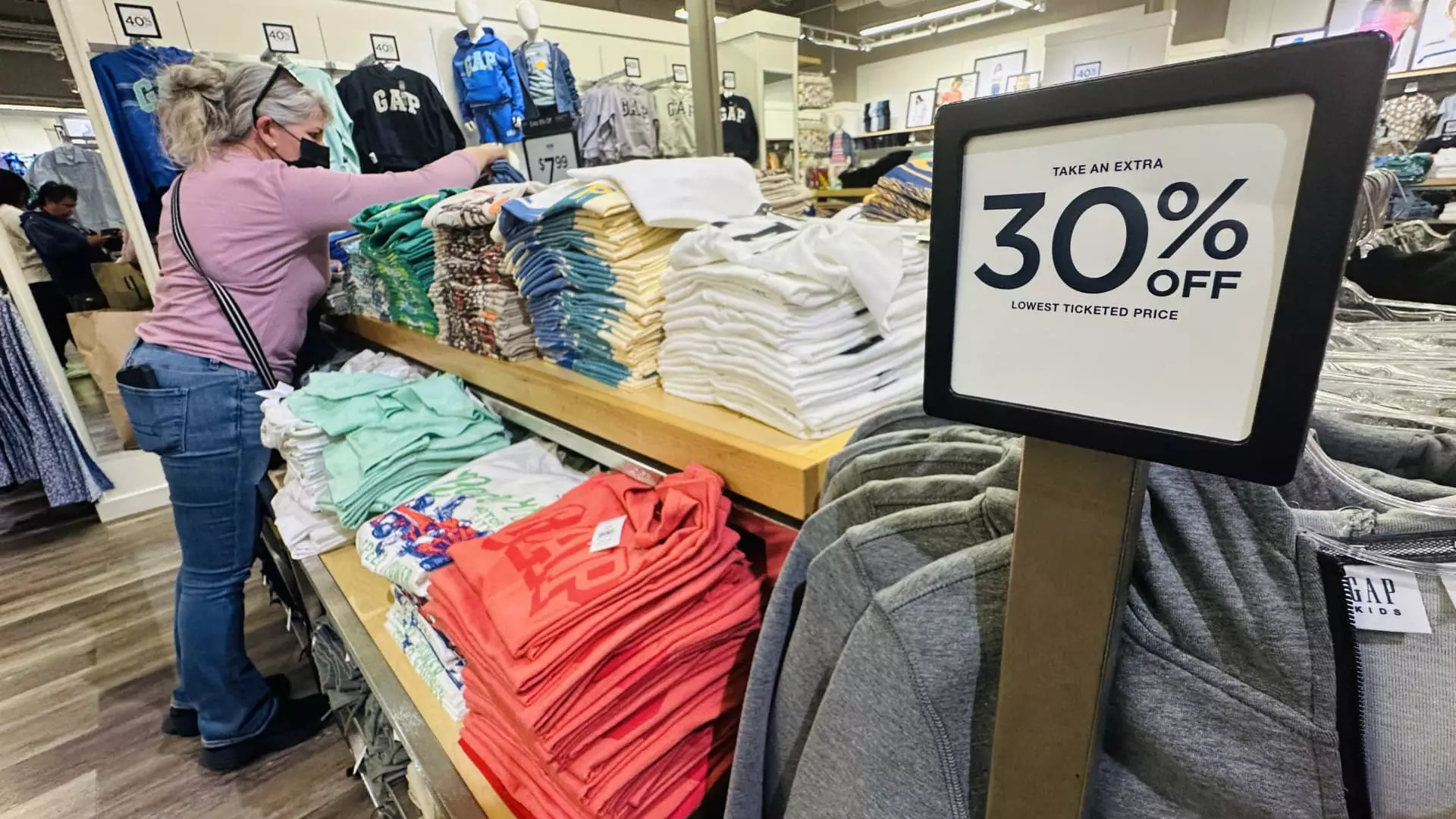In a world largely driven by convenience and affordability, tariffs may be the uninvited guest at a party, distorting the natural flow of commerce and ultimately hurting the very consumers they profess to protect. As trade tensions escalate, the fashion industry finds itself on the frontline, facing the brunt of these import taxes and their cascading effects on American shoppers. Experts predict an alarming increase in clothing prices, with some estimates indicating a staggering 65% hike for consumers in the immediate future. Such increases raise essential questions about who ultimately bears the burden of these tariffs. Spoiler alert: it isn’t the foreign manufacturers.
The nature of the apparel industry in the United States is heavily reliant on imports, with a staggering 97% of clothing coming from overseas, primarily from manufacturing powerhouses such as China and Vietnam. Tariffs imposed on these goods act as a tax on American consumers, driving prices ever higher, while denying future consumers the variety and affordability once possessed. Julia Hughes, president of the United States Fashion Industry Association, encapsulates the dilemma succinctly: “Ultimately no one wins.” The question begs—who benefits when these tariffs cripple the ability of consumers to purchase the very goods they desire?
Back to Basics: The E-Commerce Fallout
The trade landscape has shifted dramatically, especially with the revocation of the de minimis tax exemption, which allowed low-value imports to make their way into the U.S. duty-free. This move particularly hinders e-commerce companies and American shoppers who have enjoyed the luxury of affordable goods, especially from online giants like Shein and Temu. Shoppers across the country will now face immediate devastation, with analysts warning that these inflated costs will disproportionately harm low- to middle-income families.
Additionally, as some industry leaders have indicated, many consumers are reverting to “trade-down” behavior, gravitating toward thrift stores and less expensive options. This cultural shift could suggest that economic constraints are introducing a newfound societal acceptance of secondhand purchasing—a hopeful adaptation in an otherwise bleak scenario. But it raises concerns about how this will ultimately affect production and marketing practices within the conventional retail ecosystem.
Spotting Counterfeiters: A Shadow Economy Emerges
With rising prices provoking panic among shoppers, another consequence of heightened tariffs could be the acceleration of the counterfeit market. As authentic goods become increasingly unaffordable, the demand for knockoff items will likely surge, presenting an attractive option for price-sensitive consumers who wish to maintain a semblance of luxury in their lives. As expert Vidyuth Srinivasan aptly pointed out, trade restrictions create fertile ground for counterfeiters to thrive, adapting their strategies to circumvent new barriers.
The reality is stark: while tariffs are ostensibly designed to protect American jobs and industries, they inadvertently empower a shadow market that undercuts legitimate businesses and warps consumer behavior. Consumers are left to navigate a web of quality inconsistencies that coincide with their quest for affordability—a daunting task in an already confusing economic landscape.
The Resale Revolution: Adapting to New Norms
Interestingly, the turmoil resulting from tariff policies is also making way for the rapid growth of the resale market, with projections indicating significant expansion in the coming years. An emerging trend where young consumers embrace thrift and secondhand options suggests a meaningful shift in priorities. People are increasingly turning to resale platforms, not only for affordability but also as a sustainable option in a society increasingly concerned with environmental impacts.
As Christos Garkinos, founder of the online reseller Covet By Christos, highlights, the dynamics of luxury consumption are evolving. Consumers are doubling down on resale, seeking out goods that don’t carry the added burden of tariffs. The growth of re-commerce represents a seismic shift in consumer behavior—one that could potentially force traditional retail to rethink its strategies in a world where secondhand goods become commonplace.
What Lies Ahead? The Future of American Apparel
As we stand at this crossroads, the apparel industry grapples with uncertainty. Seasoned professionals and industry leaders are anxiously eyeing potential trade agreements and the evolution of tariffs as the back-to-school shopping season approaches— historically a boon for retailers. The chaotic turbulence resulting from shifting trade policies is reshaping the industry’s future, and consumers remain resilient, searching for solutions in a world where adaptability has become necessary for survival.
Ultimately, the consequences of tariffs extend well beyond mere numbers and statistical forecasts. They challenge the very ethos of American consumer culture, compelling us to reconsider how we shop, what we value, and whom we support in this increasingly interconnected global marketplace. As we confront these challenges, it remains essential to advocate for policies that prioritize the welfare of the consumer rather than punitive measures that only serve to inflate costs and exacerbate existing inequalities.

